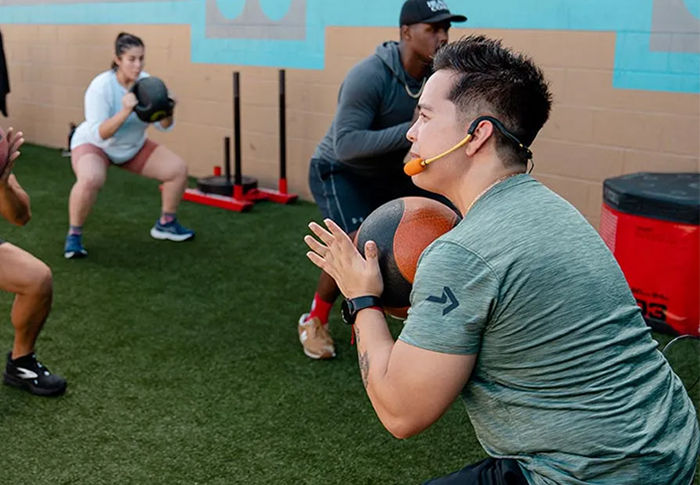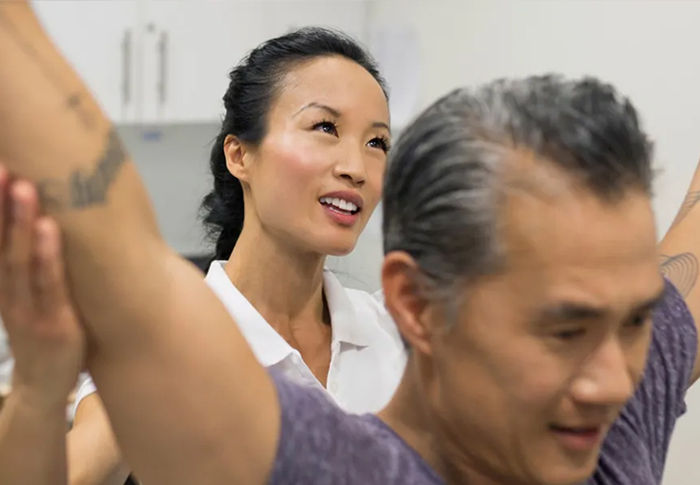|
Key Takeways Men’s Health Month is a great time to explore the differences in life expectancy between men and women—termed the “longevity gap”—with women living 5.3 years longer than men in the U.S. Several reasons explain the gender differences in health, as men tend to have higher levels of work-related stress and higher rates of alcohol and substance abuse, as well as higher rates of physical inactivity and a lack of routine medical care. The good news is, the work you do with clients every day directly impacts many of these factors. Read on to learn more about why the longevity gap exists and what you can do to help your male clients live longer, healthier lives. |
Women live longer than men—and that “longevity gap” is a cause of concern for many researchers. Life expectancy in the United States is 75.8 years for men and 81.1 for women, meaning there is a longevity gap of 5.3 years between the sexes. While the gap fluctuates from year to year, the overall trend shows it’s widening over time. The good news is that overall life expectancy has been increasing across the board and now stands at 78.4 years in the United States. (It’s worth noting, however, that this figure remains 4.1 years shorter than what is seen in comparable peer countries, but that’s a topic for another blog.)
Understanding the Gap
Why do men have shorter lifespans? The reasons are complex and vary across time and geography. For example, major wars have historically led to huge spikes in the death rates of young men. As an extreme example, during World War I, men in France had a life expectancy that was 25.4 years shorter than women. Another factor is infant mortality. Newborn boys have a higher probably of death than newborn girls, as they are more likely to be born premature, have less developed immune systems and are more susceptible to some genetic disorders.
Of course, health and exercise pros can’t do much about world peace and infant health, but there are lifestyle factors at play across the lifespan that impact life expectancy and lie at the core of the work you do with clients every day. An article from Harvard Health Publishing on the gender gap in health includes the following among the reasons why men lag behind women in terms of health:
- High work-related stress
- Weaker social networks and supports
- Higher rates of smoking
- Increased alcohol and substance abuse
- Poor dietary habits
- Higher rates of physical inactivity
- Lack of routine medical care
This is not meant to imply that women don’t share these same concerns, only that men tend to experience them to a greater extent.
What This Means for Health and Exercise Professionals
Men’s Health Month, observed every June, is a great time to consider the longevity gap and explore ways in which health and exercise professionals can positively impact their male clients’ overall health and wellness. This begins with raising awareness about health issues affecting men and encouraging them to prioritize their well-being.
A great place to start is an honest and open conversation about each of the factors listed above, which is well within the scope of practice of any ACE Certified Professional. You should be wary of straying into the role of a “mental health counselor,” but you can certainly encourage clients to make positive strides in each of those areas and then collaborate in order to empower them to take proactive steps toward wellness. For example, you might offer stress-management techniques or discuss the social benefits of exercising as part of a group. You might discuss how better sleep enhances exercise recovery or the mental health benefits associated with consistent exercise.
The point here is that all of these factors are interconnected, so making imporvements in one area can ofteen set off a cascade of improvements acroess a person's overall lifestyle. Once a client becomes committed to regular exercise, for example, they may be more open to other behavior changes, like improving their nutrition or reducing alcohol intake.
In conclusion
No one’s lifestyle is perfect, so it’s important to emphasize that the objective is to make strides to improve in an area that the client feels is a priority, with an understanding that they all work hand in hand. Have clients identify one or two goals to get started and then build from there.
For example, a client may set a goal of joining a running club to improve their performance and become more social. That may lead to better exercise consistency and improved social connectedness, both of which improve mental health. The added exercise may also improve their ability to get a good night’s sleep, which might in turn reduce their stress levels during the workday. Collectively, that cascade of health behavior changes and resulting benefits will improve their health, longevity and overall quality of life.




 by
by 






